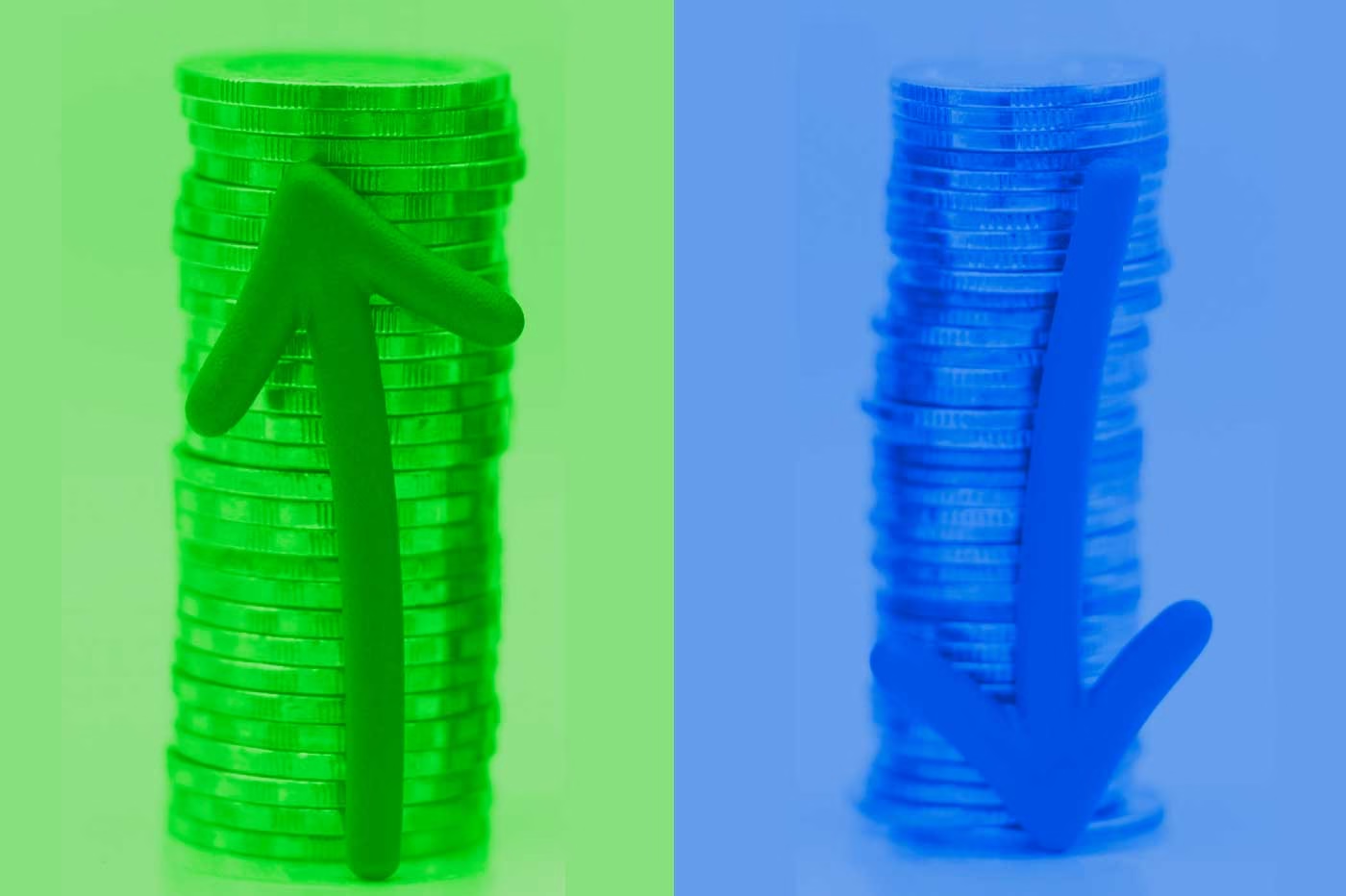If you’re nearing retirement, taxes matter even more. Small choices can change your cash flow for years. Capital gains and capital losses sit at the heart of that story. When used well, they can help you keep more of what you earn. But when used poorly, they can raise your tax bill and Medicare premiums. In this guide, I’ll clear keep things simple, direct, and useful so you have a clear understanding of capital gains and losses and how they cam impact your retirement. Lets dive in!
Table of Contents
Why Capital Gains and Losses Matter More Near Retirement
In your working years, new savings can cover mistakes. In retirement, the portfolio has to carry more weight, so taxes either amplify or erode that support. Capital gains affect your income, the taxation of Social Security, and even Medicare IRMAA.
Capital losses can offset pain if you harvest them well. The real goal is control: with a bit of planning, you can manage both the timing and the size of taxable sales so your plan stays on track.
Capital Gains 101: What Counts and When You Owe
Capital gains arise when you sell a capital asset for more than your cost basis. That could be stock, an ETF, a mutual fund, or real estate. Gains do not count until you realize them, which means you have to sell.
Short-Term vs. Long-Term
Hold an investment for one year or less and your gain is short-term. It’s taxed like wages at ordinary income rates. Hold more than one year and your gain is long-term. It’s taxed at preferential rates. That one-year line matters a lot, so note your purchase dates before you hit sell.
Where Gains Show Up
Most investors see gains in taxable brokerage accounts. You can also see them via mutual fund distributions, the sale of a property, or a business interest. Inside IRAs and 401(k)s, sales don’t create current capital gains; withdrawals later are generally taxed as ordinary income.
How Netting Works
The IRS first nets your short-term gains and losses, then nets your long-term gains and losses. Finally, it nets those two results against each other. The combined figure is what drives your tax bill for the year.
Capital Losses 101: How Losses Offset and Carry Forward
Losses reduce tax on gains first. If your losses exceed gains, you can deduct a limited amount of ordinary income this year—up to $3,000 ($1,500 if MFS) per year, with carryforward of the excess. Anything left carries forward to future years. Those carryforwards are a real asset—you can deploy them when you need to sell appreciated positions.
Harvest losses when you expect gains this year or soon. Losses can also smooth taxes when you rebalance. Just avoid harvesting so aggressively that you end up in poor replacement holdings or reduce future flexibility.
Your Cost Basis: The Backbone of Every Decision
Cost basis is what you paid for an investment, adjusted for certain items. It’s the starting point for every gain or loss calculation. Track it carefully and you’ll avoid nasty surprises.
You establish basis when you buy. Reinvested dividends and capital gains distributions add to basis. Employer equity adds twists: RSUs, ESPP purchases, and option exercises all affect basis differently, so save your confirmations.
Inherited assets usually receive a step-up in basis to the date-of-death value. Gifts usually receive carryover basis from the giver. Those rules can dramatically change the tax math on a future sale.
You can sell using FIFO, average cost (for many mutual funds), or specific share identification. Specific share ID gives you the most control because you can choose the exact lots to sell. Turn it on at your custodian and keep the confirmations with your tax files.
Dividend reinvestment creates new tax lots every time it buys more shares. That’s fine, but it does change basis and adds paperwork. Reconcile your 1099-B each year and make sure the lots match your records.
Special Assets and Situations
Not all gains look the same. Some assets carry special rules or extra layers of tax.
The primary home exclusion can shield part of the gain on your residence, provided you meet the ownership and use tests. Keep records of improvements and selling costs, because both can raise basis and lower taxable gain.
Rental and investment property sales trigger capital gains and may also trigger depreciation recapture. Recapture is taxed differently than long-term gains, so it’s worth modeling the sale with a tax professional before you list the property.
Collectibles and certain other assets may face higher federal rates. If you own art, coins, or precious metals, confirm the treatment before selling. Active mutual funds can also surprise you with large December distributions; exchange-traded funds are often more tax-efficient. In late fall, check distribution estimates so you don’t buy right before a big payout.
The Retiree’s Playbook: Timing, Brackets, and IRMAA
This is where the mechanics meet real life. Your income can vary year to year. So can your tax bracket and your Medicare premiums. You want to shape those outcomes on purpose.
Many retirees enjoy a window between retirement and RMD age when income is lower. That’s a good time to harvest long-term gains at lower rates. It can also be a good time for Roth conversions. Coordinate the two so you stay within the brackets you intend.
Capital gains increase provisional income. When provisional income rises, more of your Social Security can become taxable. Instead of one large sale, smaller staged sales can help you avoid unpleasant thresholds. Run the numbers before you pull the trigger.
Medicare IRMAA looks at your tax return from two years ago, so a big gain today can raise Part B and Part D premiums later. Plan with a two-year lens and track the IRMAA thresholds so you can steer around them when possible.
Once RMDs begin, your base income rises automatically. If you also sell appreciated positions in those years, you can climb into higher brackets or IRMAA tiers. One approach is to trim appreciated holdings before RMDs start, then use RMD cash to rebalance without adding more gains.
Retirement also needs a paycheck. Decide which accounts will fund it and in what order. Then fit gains and losses around that cash-flow plan so you’re funding life and managing tax at the same time.
Tax-Efficient Portfolio Design: Win Before You Sell
Good structure reduces future tax friction. Asset location is the first lever. Place tax-inefficient assets, like taxable bonds or REIT funds, in IRAs when possible. Place tax-efficient assets, like broad index ETFs, in taxable accounts. This keeps annual tax drag lower.
Your fund choices matter too. Broad market index ETFs tend to distribute fewer capital gains than many active funds. That doesn’t make active “bad,” but it does mean you should check a fund’s distribution history and turnover before buying.
Rebalancing can be tax-smart. Use dividends, interest, and new contributions to move the portfolio toward target weights. When sales are necessary, use specific share ID to control the tax impact. And if you give to charity, consider donating appreciated shares or funding a donor-advised fund in a high-income year to remove embedded gains and capture a deduction if you itemize.
Tax Loss Harvesting: Powerful, With Pitfalls
Tax loss harvesting turns paper losses into usable tax assets. You sell a holding at a loss, capture the loss for taxes, and immediately buy a replacement that keeps your market exposure. Done well, this lowers lifetime taxes without changing your investment plan.
Pick the lots with the largest losses using specific ID, then place the sale and the replacement buy the same day. Keep the exposure similar but not identical—swapping between different index families is a common approach that preserves your strategy without violating rules.
Avoid over-harvesting. Giant carryforwards you never use can backfire if they push future income into higher brackets when you finally sell. Remember, harvesting reduces basis, which can increase a future gain. Think in multi-year terms, not just one season.
The wash-sale rule disallows a loss if you buy a substantially identical security within 30 days before or after your sale. The rule spans all your accounts, including IRAs and a spouse’s accounts. Automatic dividend reinvestment is a frequent trigger. If you plan to harvest, turn off DRIPs temporarily and coordinate across the household.
If you need a replacement, choose something similar but not substantially identical. For example, swap from a total market ETF to a large-cap ETF, or move between providers that track different indexes. You’ll keep your exposure and keep the loss.
Real-World Examples
A couple, ages 62 and 60, plans to delay Social Security. Their income drops for a few years, creating a window. They harvest long-term gains up to the top of a lower bracket and collect small losses to neutralize mutual fund distributions. IRMAA stays below the thresholds, and their cost basis rises for future flexibility.
A new retiree at 66 holds a concentrated stock from years ago. They stage sales over four years to spread taxes and reduce risk. Each year they donate some shares to a donor-advised fund, and they sell more in the year before RMDs start. The combination trims concentration and smooths the tax profile.
A rental property owner decides to sell. Before listing, they model capital gains and depreciation recapture with a CPA. In that sale year, they avoid realizing big portfolio gains and consider an installment sale to spread income if it fits their goals.
A parent wants to leave appreciated index funds to adult children. Because heirs receive a step-up in basis, the plan is to hold for life unless risk or cash needs demand otherwise. Selling now would create tax without improving the legacy.
Planning Calendar and Checklist
Key dates arrive every year. In late fall, many funds publish distribution estimates. If you’re about to buy a fund with a large upcoming payout, consider waiting. Near year-end, review your realized gains and losses so you can make final adjustments while trades still settle in time.
Quarterly, check estimated tax needs if you’ve realized sizable gains. In winter, your 1099-B arrives—reconcile cost basis, confirm your lot IDs, and save broker confirmations. If you plan to harvest losses in the new year, verify that dividend reinvestments are turned off in the affected accounts.
Each year, update your ledger of gains and losses, confirm specific share identification at every custodian, and preview the IRMAA impact two years ahead. Keep donation receipts and donor-advised fund confirmations with your tax files so everything ties out.
Numbers to Know
Capital loss deduction: $3,000 per year ($1,500 MFS), with unlimited carryforward.
Primary home exclusion: up to $250,000 single / $500,000 married filing jointly (ownership and use tests apply).
Wash-sale window: 30 days before/after; IRA repurchases can permanently disallow the loss.
NIIT: 3.8% on net investment income above the applicable thresholds.
Social Security: up to 85% of benefits may be taxable depending on provisional income.
Medicare IRMAA: two-year lookback may increase Part B/D premiums after a high-income year.
Common Mistakes (And Easy Fixes)
One frequent mistake is triggering wash sales across household accounts. The fix is simple: turn off DRIPs around harvests and coordinate trades with your spouse and your IRA.
Another is defaulting to FIFO instead of specific share identification. Ask your custodian—in writing—to set specific ID as your default, and keep the confirmation.
Investors also buy mutual funds right before large year-end distributions. A quick check of distribution calendars each fall can prevent that surprise.
Sometimes people sell in taxable accounts when they could rebalance inside an IRA and avoid current tax entirely. If you have both account types, place the tax-inefficient trades in the tax-deferred bucket when you can.
Finally, don’t let taxes drive the bus. Start with your investment policy and the risk you can live with. Use taxes to refine the plan, not to dictate.
Frequently Asked Questions
What Is the Difference Between Short-Term and Long-Term Capital Gains?
Short-term gains come from assets held one year or less and are taxed like wages. Long-term gains come from assets held more than one year and receive lower rates.
Can Capital Losses Offset Ordinary Income?
Yes. After offsetting gains, you can deduct a limited amount of ordinary income each year. Any excess loss carries forward to future years.
Does Reinvesting Dividends Change My Basis?
It does. Each reinvestment creates a new lot and increases basis. Track those lots so your 1099-B ties to your records.
How Do I Avoid Wash Sales During Tax Loss Harvesting?
Don’t buy the same or substantially identical security 30 days before or after your sale. Turn off DRIPs and coordinate across spouse and IRA accounts.
Do IRAs and 401(k)s Create Capital Gains?
Sales inside those accounts don’t create current capital gains. Withdrawals later are generally taxed as ordinary income instead.
How Do Capital Gains Affect Social Security and Medicare?
Gains can increase provisional income, which can make more of your Social Security taxable. Gains also increase AGI and can trigger Medicare IRMAA two years later.
Work With a Pro When It Pays to Ask for Help
You don’t need a professional for every trade. But complex years—property sales, large stock liquidations, or multi-year Roth conversion plans—deserve help. A fee-only fiduciary can coordinate portfolio moves with a multi-year tax map. A tax professional can model brackets, NIIT, AMT, and IRMAA so there are fewer surprises.
Conclusion: Keep More of What You Earn
Capital gains and capital losses are tools, not traps. Track basis carefully. Plan sales with a multi-year lens. Harvest losses with care and avoid wash-sale snags. With a steady, tax-aware process, you can keep more of what you earn and spend more on what really matters.


